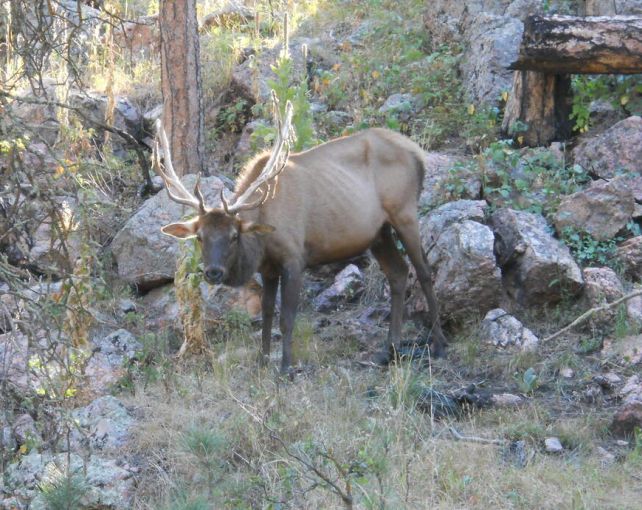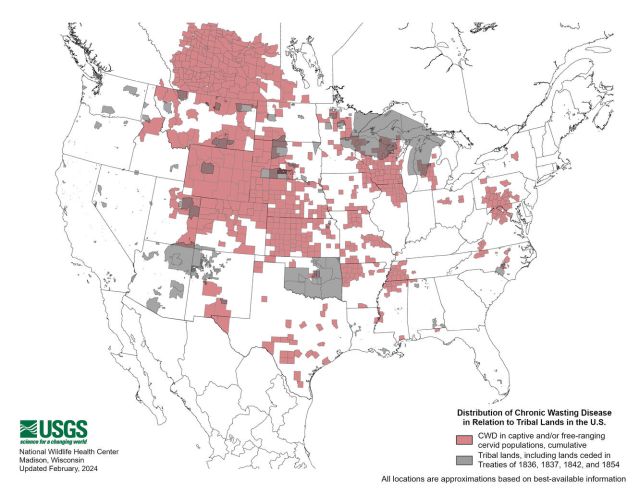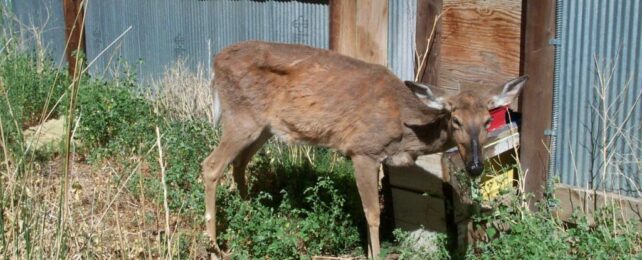A medical case report suggests that a deadly prion disease may have made its way from deer into humans.
Two hunters have died after consuming venison from a population of deer known to be infected with chronic wasting disease – an incurable, fatal prion sometimes known as "zombie deer" disease not dissimilar to bovine spongiform encephalopathy, or mad cow disease.
A team of doctors at the University of Texas report a 72-year-old man died after presenting with rapid-onset confusion and aggression.
The man's friend, who was a member of the same hunting lodge, died at a later, unspecified date after presenting with similar symptoms, the doctors note. A post-mortem determined that this second patient had died of Creutzfeldt-Jakob disease, AKA prion disease.
Since prion disease is relatively rare in humans, the two cases could mean that chronic wasting disease – described by the Center for Disease Control as never having been reported in humans – has made the zoonotic leap from animals.

Prion diseases, known as Creutzfeldt-Jakob disease or CJD in humans, are kind of terrifying. Prions are proteins that haven't folded properly, and therefore don't really function the way they should. The problem is that these misfolded proteins teach the proteins around them how to fold badly, too, resulting in a spread of dysfunctional tissue that cannot be halted or cured.
The spread of prions through brain tissue produces symptoms very similar to a kind of fast-tracked dementia, to which the patient eventually succumbs. Since CJD doesn't produce any kind of immune response, it's practically impossible to diagnose in a living patient.
Significant concerns have already been raised about chronic wasting disease. It infects animals such as deer, elk, and moose, and seems to be transmitted fairly easily between them; scientists think it is transmitted via bodily fluids such as blood or saliva, either through direct contact, or contamination in the environment.
Research has also shown that chronic wasting disease can infect mice modified with human genetic material in a laboratory setting. And humans are apparently fairly blasé about the risk. A study all the way back in 2019 noted that some 7,000 to 15,000 animals with the disease were being eaten every year, a number that was likely to increase by 20 percent annually.
It's not known for certain whether the two men described in the case report succumbed to chronic wasting disease, or whether their illness had another source. Prion disease may emerge spontaneously, for example, although that is, as far as we can tell, extremely rare.

The case report also doesn't mention from whence the two men hailed, but the disease can be found across the North American continent in wild populations, including at least 32 states in the US and across Canada. It can also be found among farmed deer.
Given that zoonotic prion disease is absolutely possible, and that transmission to humans has been predicted for some time, the situation, the doctors say, warrants caution and attention.
"Although causation remains unproven, this cluster emphasizes the need for further investigation into the potential risks of consuming CWD-infected deer and its implications for public health," they write.
"Clusters of sporadic CJD cases may occur in regions with CWD-confirmed deer populations, hinting at potential cross-species prion transmission. Surveillance and further research are essential to better understand this possible association."
The case report has been published in Neurology.
